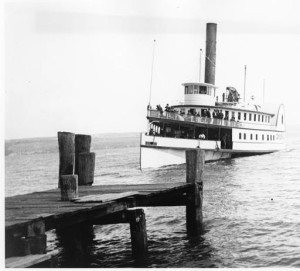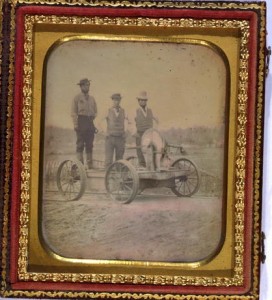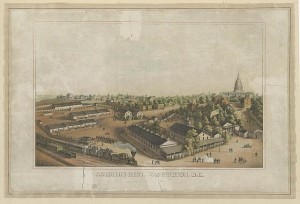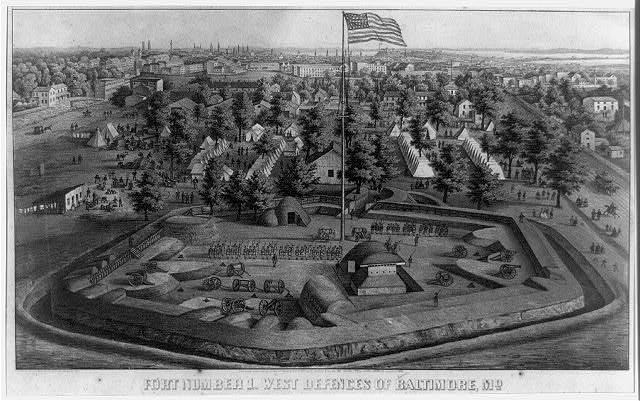The 1st New York Veteran Cavalry Regiment had been pretty much recruited. 150 years ago this week a large contingent traveled to the Washington, D.C. area. In a strange kind of time warp our SENECA correspondent said the regiment left Geneva, NY on Monday, October 21st, which I’m pretty sure would have been impossible in 1863. (I’ll check for a possible copying error soon) The troops were disgruntled by cold shoulder treatments in Pennsylvania and appear to have taken matters into into their own hands a bit vis-à-vis the citizenry. They received wonderful hospitality in Baltimore and eventually arrived at the Dismounted Camp outside the Union capital.
From a Seneca County, New York newspaper on November 1863:
1st Veteran Cavalry.
On Monday the 21st ult, the 1st Veteran cavalry under command of R.F. Taylor, embarked upon the steamer waiting at Geneva to convey the regiment on its journey southward, and as the boats moved off from the wharf amid the huzzas of the crowd and the answering cheers of the soldiers, the clouds which had been lowering, broke away and the bright sun shone gloriously forth a happy omen of our future.
Arriving at Elmira near midnight we marched to the old No. 3 Barracks and occupied them until the next day, when we started for Washington. While in Elmira Col. Taylor addressed the regiment explaining why we were to be taken out of the State before receiving the bounty which had been promised, and guaranteed to every man his rights. The boys gave three hearty cheers for their gallant Colonel and marched to the cars without a murmur.
The journey from Elmira to Washington was rather slow and tedious; however we ran over two or three hand cars and had several other accidents to vary the monotony of the trip. At Williamsport we expected to receive rations but they were neither “present or accounted for” so the boys went out foraging we a degree of success that showed them to be Veterans indeed. We stopped at “ye ancient city of York” for several hours. The citizens seemed to be rather “Secesh” in their proclivities and even refused to take “greenbacks” in several instances. This furnished the boys with an excellent excuse to confiscate whatever they could lay their hands upon. I assure you they improved the opportunity and went on their way rejoicing.
On Wednesday afternoon we reached the beautiful and hospital city of Baltimore, and were at once conducted to the spacious rooms of the BALTIMORE UNION RELIEF ASSOCIATION, where we were furnished with a splendid dinner by the kind and gentlemanly managers of this benevolent institution. And here let me say that in no city or town in New york or Pennsylvania are the soldiers so kindly received or so generously entertained as in Baltimore. Regiments and detachments are continually passing through and all are treated in the same generous manner and sent on their way with light and happy hearts feeling that after all there are some who are for the wants of the soldier. Some idea of the magnitude of the work performed by these “Good Samaritans” may be derived from the following paragraph taken from the second annual report of the Treasurer of the Society, Warren Denison, Esq.
He says that the total number of soldiers fed during the past year was 318,064, of whom 74,042 were from the State of New York, and 10,967 wounded from the battle field of Gettysburg alone. Among other articles of food consumed during the year were 99,662 ponds of beef, 163,485 loaves of bead, 50,296 pounds of cheese, 10,487 ponds of coffee and 28,313 pounds of sugar. $47,657,00 [$47,657.00?] were received and expended for the benefit of our soldiers, by the managers of this institution of which only $3,209 were used in defraying house expenditures, for labor, showing the rigid economy with which the affairs of the institution are managed.
Bidding our kind friends adieu we took the cars for Washington where we arrived at two o’clock on Thursday morning. – Stopping at the “Soldiers Rest” – a government institution – until afternoon we marched to our present camping ground about four miles below Washington on the north bank of the Potomac. The camp is very pleasantly located among the hills of “My Maryland” and is called Dismounted camp being the rendezvous for new Cavalry regiments and the place where men who have been dismounted in battle are sent to recruit and obtain new horses. Thousands are here awaiting orders and the white tents of the “Gay Cavaliers” stretch away over the hills as far as the eye can reach. Our regiment has been Brigaded with the Regulars (quite an honor) in General Stoneman’s Corps, but our destination is unknown, beside everything concerning our movements or numbers is of course contraband. Our friends must therefore be content to hear what we have done and not ask about the future. So for the present good-bye and when any thing occurs that ought to be “recorded” you shall hear again from
SENECA.
The boat in the top photo is the Steamship Onondaga which was built in 1860 and used to transport troops on Seneca Lake during the Civil War. In 1870 it was rebuilt and continued to haul passengers until 1895. In 1898 it was blown up in a public pageant on Seneca Lake. the event was advertised as a celebration of some American victories in the Spanish-American war by using a similar mine to the one that blew up the USS Maine in Havana Harbor. The shipwreck was discovered in 2012. You can read more about it at the Finger Lakes Times. Thanks to the Geneva Historical Society for letting me use the photo.
You can read more about the Baltimore Union Relief Association in an article about the charitable work of Baltimore women during the war at the Maryland State Archives




